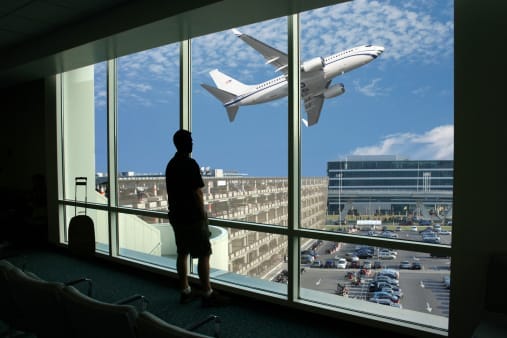Airport terminals used to be simple, functional buildings with places to park cars and planes, but along the way airport operators realized that passengers were willing to spend money while waiting for their flights.
Then 9/11 changed everything. Terminals had to accommodate huge baggage-screening devices that they had not been built to house. Security lines became a key determinant of when travelers would arrive to catch their flights. People no longer wanted to stay on the unsecured side of the terminal, rushing instead through the checkpoint to the secure side as quickly as possible. With the advent of the Transportation Security Administration (TSA) and the agency’s myriad rules, airports had to dedicate screening, office and support space. These changes to airport operations and traveler behavior led to changes in the physical makeup of an airport.
In came the security screening infrastructure: baggage-screening machines and the staff to run them. Most airports sought to place the equipment “in-line,” setting it up so that baggage belts carried the luggage straight from the ticketing counters to screening and then, post-screening, to the aircraft. As a result, miles of baggage belts were needed. Then came larger security checkpoints to accommodate all the required equipment for screening larger carry-on baggage, which meant more space before and after security screening points as passengers had to queue and disrobe before going through the checkpoint and then recompose afterward.
Once through security, passengers reached the “airside” portion of the airport, a collection of hold-rooms occasionally offering an overpriced hot dog or a warm beer.
Progressive airports, however, viewed the airside as an opportunity to provide outstanding customer service, increase revenue and leave a lasting impression of the host community on travelers.
Intelligent airport managers want their airside to create a sense of place and differentiate their airport. Hold-rooms are no longer viewed as places to “store” passengers before they depart. Changes in travelers’ needs and wants, and the amount of time they have at airports, now mean hold-rooms serve as offices, dining rooms and even playgrounds. As airlines experiment with different strategies to reduce boarding times, space allocation within hold-rooms and terminals is changing. Airports, airlines, concession developers and operators are rethinking how to meet travelers’ needs in these overlooked areas.
The most obvious change is to offer travelers the chance to recharge, in multiple senses of the word. Travel professionals realize they must change the mindset of passengers before they are ready to spend money on airport concessions. One of the first strategies was to leave behind the traditional rows of black or blue, often ripped, upholstered seating and install more comfortable chairs and benches, rocking chairs, and to try to seat groups of people around low tables and bar-type seating and counters.
The second aspect of recharging is to accommodate the variety of electrical equipment travelers carry. Users need to plug in their smartphones, tablets and laptop computers for the flight ahead. Solutions range from power poles, provided by airlines, to seating with power outlets, cup holders, and work desks sponsored by the airport or local businesses.
Hold-rooms now often serve as dining rooms. In the past, travelers simply brought food they’d carried from home or purchased at airport shops, and ate on the floor, or hunched over using a second seat as a makeshift table.
Airports, concessionaires and commercial developers now provide a variety of tables that allow travelers to enjoy their food without scarfing it down. Concessionaires are experimenting with ways to further blur the lines between hold-rooms and concessions.
In short, the physical world of airports is changing to be more livable, convenient and comfortable.


























